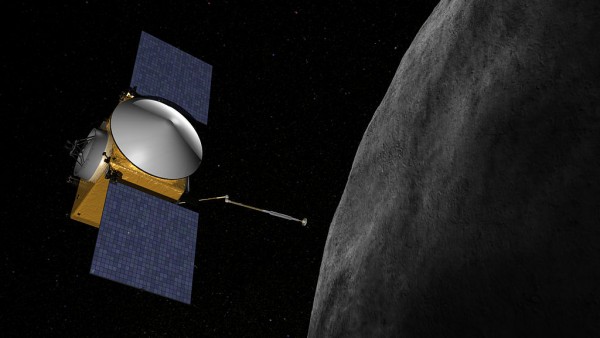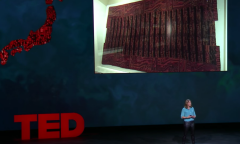By R.See, | February 03, 2017

NASA's 'OSIRIS-REx' Spacecraft Embarks on a Side Mission To Find Near-Earth Asteroids
NASA's OSIRIS-REx spacecraft is set to take on another mission wherein it will try and locate near-Earth asteroids orbiting along the planet around the sun.
The robotic spacecraft launched back in September with the objective of harvesting large amounts of asteroid samples. NASA added into its mission log to embark on a 10-day side mission to locate asteroids roaming around Earth's orbit.
Like Us on Facebook
The recent addition to its objective comes into light amid a newly discovered asteroid whipping past the Earth and its moon. The near-Earth asteroids are so-called Earth Trojan asteroids.
Currently, scientists have only located one such asteroid, which was discovered by the agency's infrared WISE telescope back in 2010. Scientists have given it the name 2010 TK-7. The 1,000-foot cosmic rock has been classified to orbit along Earth with a 60 degree angle lead.
The asteroid harvester is set to begin its journey to locate such asteroids on Feb. 9, wherein it is set to accomplish its mission with a 10-day period. It is programmed to search within 60 degrees ahead, as well as behind Earth.
The regions to be searched are also known as Lagrange points. The scientists will try and locate possible cosmic hitchhikers, that may or may not pose a serious threat to the planet.
OSIRIS-REx would not be alone in the hunt, but it will be accompanied by the James Webb Space Telescope. The telescope it set to point its sensors towards these aforementioned points.
Initially, the robotic spacecraft left Earth to venture on a seven-year mission to reach a specific asteroid, Bennu, and gather large samples to bring back to scientists.
Scientists have expressed the importance of the spacecraft's unique vantage point as ground-based observatories are only limited in seeing asteroids about 3,000 feet wide. The new mission could reveal more Earth Trojan asteroids within the planet's midst, however relatively small it may be.
-
Use of Coronavirus Pandemic Drones Raises Privacy Concerns: Drones Spread Fear, Local Officials Say

-
Coronavirus Hampers The Delivery Of Lockheed Martin F-35 Stealth Fighters For 2020

-
Instagram Speeds Up Plans to Add Account Memorialization Feature Due to COVID-19 Deaths

-
NASA: Perseverance Plans to Bring 'Mars Rock' to Earth in 2031

-
600 Dead And 3,000 In The Hospital as Iranians Believed Drinking High-Concentrations of Alcohol Can Cure The Coronavirus

-
600 Dead And 3,000 In The Hospital as Iranians Believed Drinking High-Concentrations of Alcohol Can Cure The Coronavirus

-
COVID-19: Doctors, Nurses Use Virtual Reality to Learn New Skills in Treating Coronavirus Patients










